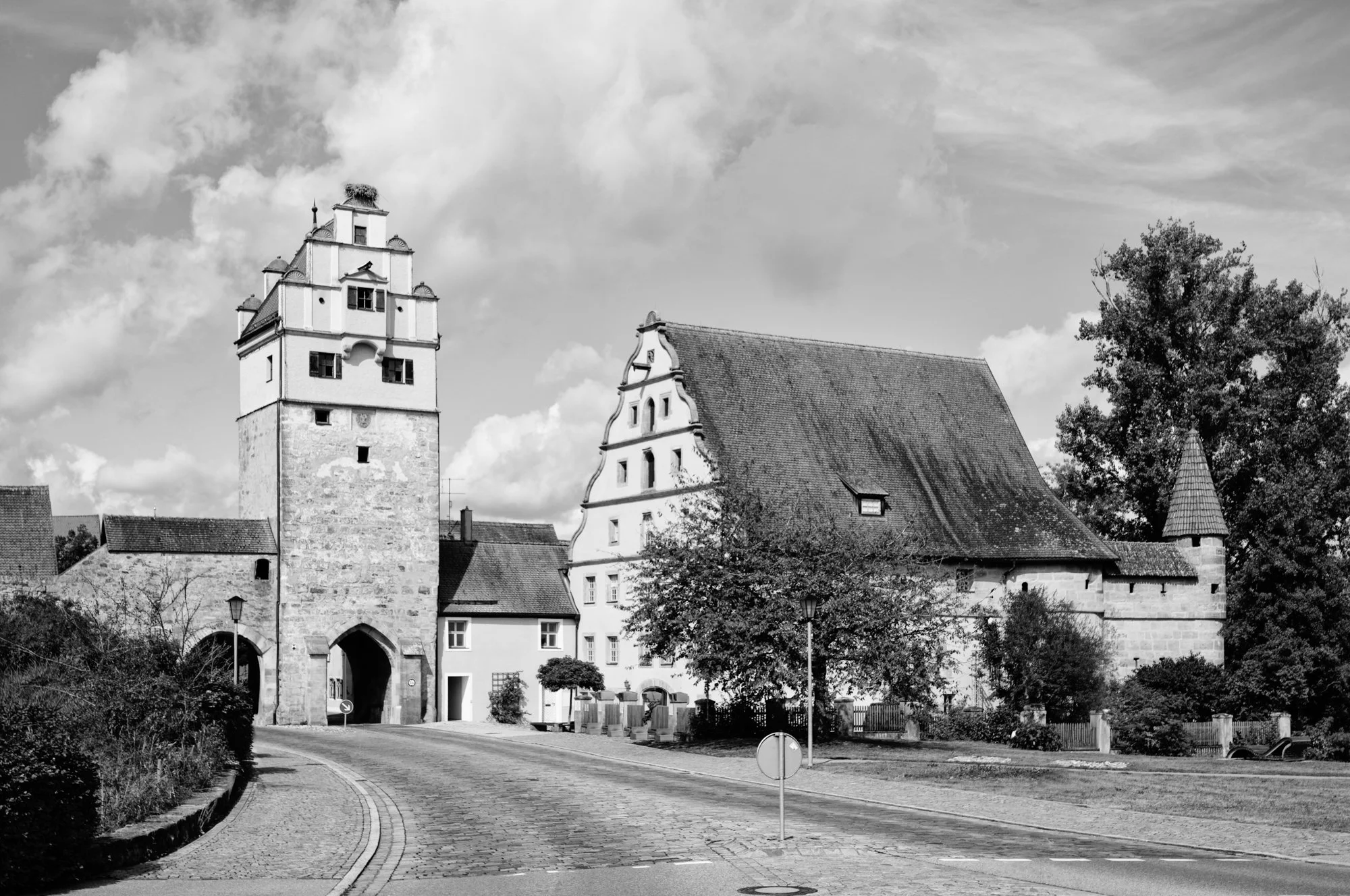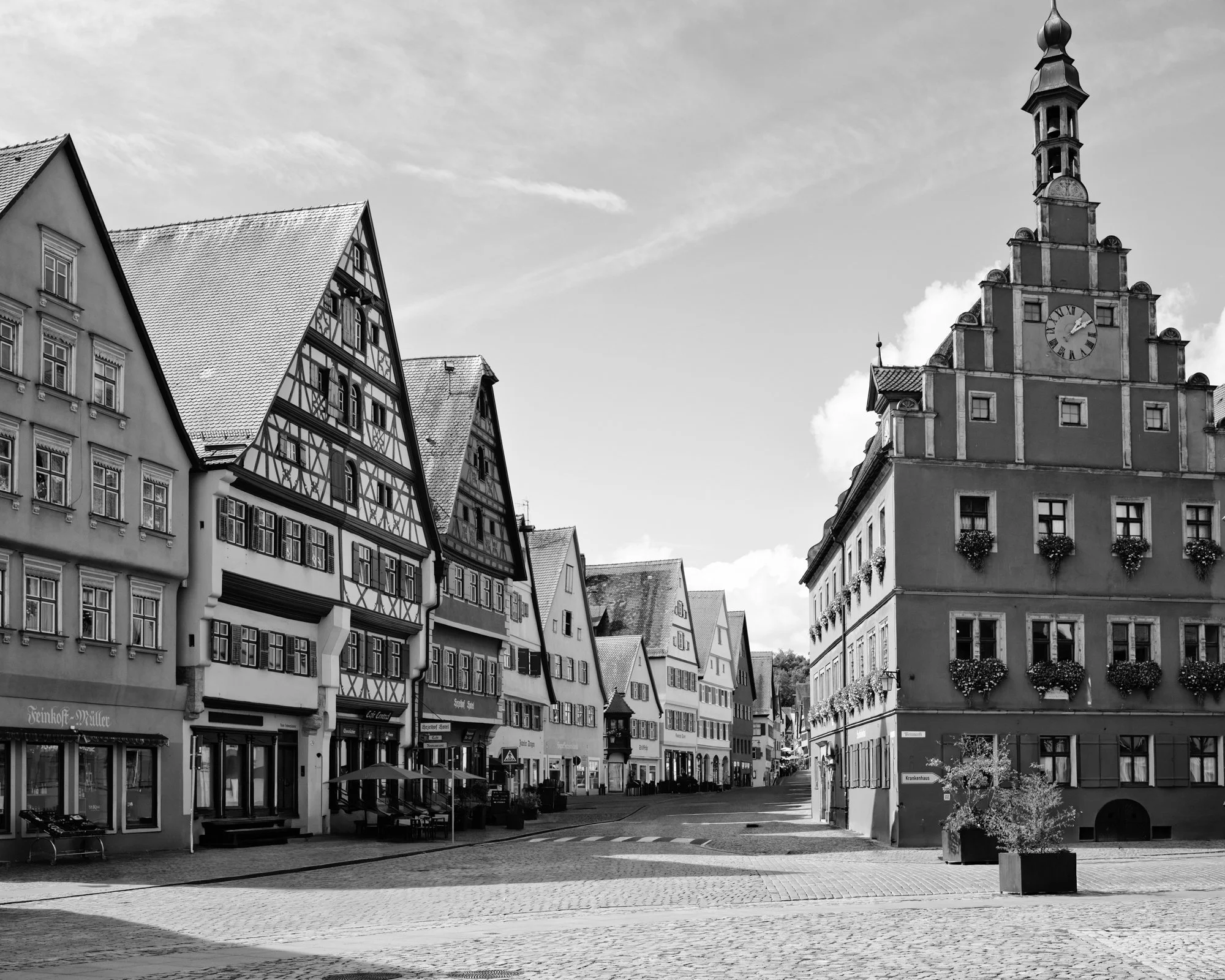The Nördlinger Tor, Dinkelsbühl (Germany).
Hidden on Bavaria’s Romantic Road, Dinkelsbühl looks almost too perfect to be real. Encircled by intact 15th-century walls and punctuated by sixteen towers, it feels as if time stopped when merchants and guilds still ruled the cobblestones. But its charm is more than just picture-book beauty.
One of the town’s most intriguing chapters dates back to the Reformation and the Peace of Westphalia (1648). Dinkelsbühl was declared a paritätische Stadt—a “city of parity.” That meant Catholics and Protestants shared power equally, an extraordinary arrangement in a century marked by bitter religious wars. Councils, schools, and even church use were organized to respect both confessions. This rare compromise spared Dinkelsbühl the sectarian violence that scarred so many other towns and shaped a culture of cooperation that lingers to this day.
Stroll the narrow lanes to St. George’s Minster, admire the gabled merchants’ houses, or follow the nightly Rothenburg-style night watchman tour, and you walk through layers of civic peacekeeping as well as medieval splendor.
Dinkelsbühl isn’t just beautifully preserved—it’s a reminder that lasting harmony can grow where tolerance takes root, a lesson as valuable now as it was nearly four centuries ago.
Segringer Strasse, Dinkelsbühl (Germany).



